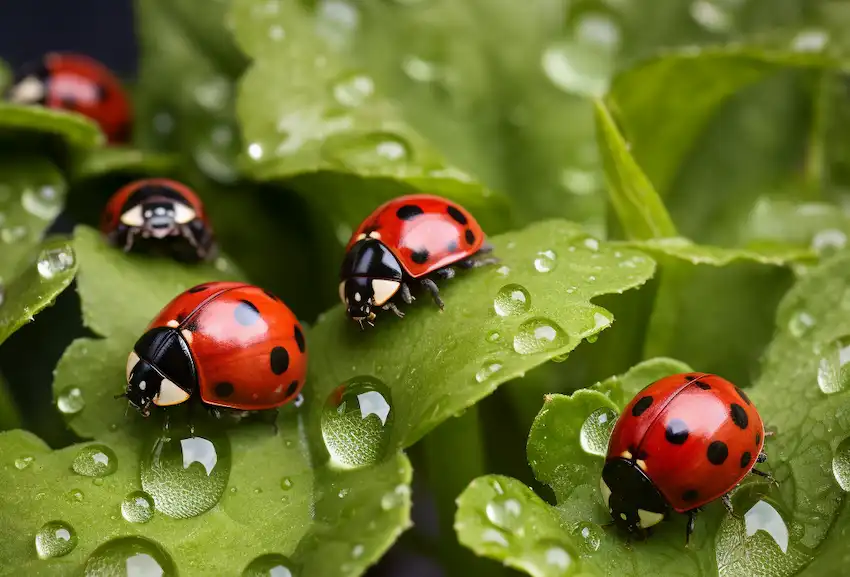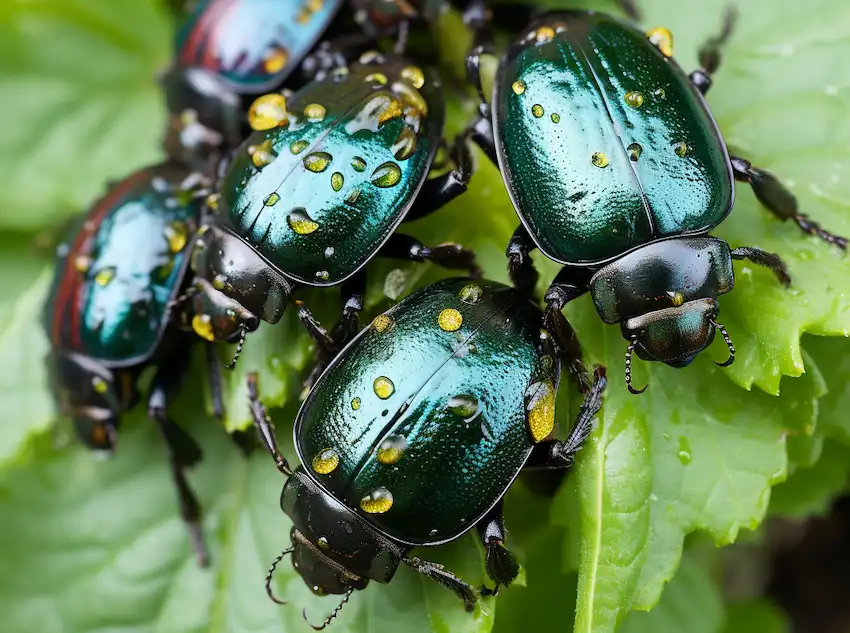Good vs. Bad Bugs in Your Garden: A Comprehensive Guide
Gardens are not just about plants; they’re ecosystems teeming with insects and other wildlife. While some bugs can wreak havoc on your plants, others play a beneficial role in pollination and pest control. Understanding the difference between good and bad bugs can help you manage your garden more effectively and maintain a healthy, balanced ecosystem. Here’s a detailed guide to help you identify and manage these tiny garden dwellers.
Understanding the Ecosystem
Before diving into specifics, it’s crucial to understand that your garden is a small part of the local ecosystem. Every insect, whether considered good or bad, plays a role. The goal is to manage this ecosystem to encourage beneficial bugs while controlling the populations of harmful ones.
The Good Bugs

These are your garden’s allies. They pollinate your plants, decompose organic matter, and keep harmful pests in check.
- Ladybugs: These beetles are voracious predators of aphids, mites, and other pests. A single ladybug can eat up to 5,000 aphids in its lifetime!
- Lacewings: Both the adult and larval stages of these insects are beneficial. The larvae, known as aphid lions, are particularly effective at controlling aphid populations.
- Bees: Essential pollinators. Without them, many of your plants wouldn’t bear fruit or seeds.
- Earthworms: While not bugs, these creatures are vital for soil health. They aerate the soil and their castings are a fantastic natural fertilizer.
- Praying Mantises: These predators consume a wide variety of garden pests. However, they can also eat beneficial bugs, so their population should be monitored.
The Bad Bugs
These are the pests that can cause damage to your plants by feeding on their sap, leaves, or fruits.
- Aphids: These small, sap-sucking pests can quickly form large colonies and weaken plants.
- Japanese Beetles: They chew through the leaves and flowers of many garden plants.
- Whiteflies: These tiny, winged insects congregate on the undersides of leaves, sucking out the plant’s juices and excreting sticky honeydew.
- Slugs and Snails: These nocturnal pests feed on a wide variety of living plants and decaying matter, often damaging seedlings and tender plants.
- Tomato Hornworms: These large caterpillars can strip a plant of its leaves practically overnight.

Step-by-Step Guide to Managing Garden Bugs
- Identify the Bugs: Regularly inspect your plants for signs of pest activity. Identifying the problem early can save your garden.
- Encourage Beneficial Bugs: Plant a variety of flowers and herbs to attract beneficial insects. For example, dill and fennel attract ladybugs, while marigolds repel many bad bugs.
- Natural Predators: Introduce natural predators, like ladybugs or praying mantises, to your garden to control harmful pests.
- Barriers and Traps: Use physical barriers, such as netting or floating row covers, to protect your plants. Traps can also be effective for certain pests like slugs.
- Organic Pesticides: When necessary, use organic pesticides sparingly and carefully. Neem oil, insecticidal soaps, and diatomaceous earth can control pests without harming beneficial insects.
- Regular Maintenance: Keep your garden clean. Remove weeds and debris where pests can breed and overwinter.
Managing bugs in your garden is about balance. By understanding the roles of different insects and taking steps to encourage beneficial ones while controlling harmful ones, you can maintain a healthy, vibrant garden. Remember, every creature in your garden plays a part in the ecosystem, and a diverse garden is a resilient garden. Happy gardening!
Inspired by this? Share the article with your friends!


















